
Jean-Luc Godard on the film that changed cinema
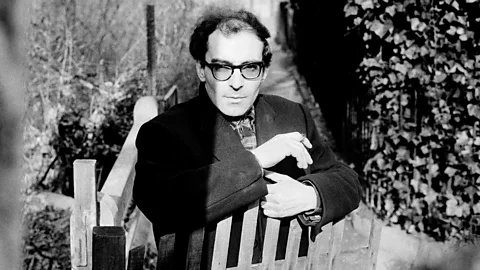 Getty Images
Getty ImagesStylish and experimental, Breathless heralded a new era of film-making when it was released 65 years ago. In 1964, its director told the BBC why he broke every rule he could.
Jean-Luc Godard was crystal clear about what he planned to do with his feature-length film debut, Breathless (À bout de souffle), which was released 65 years ago this month. He wanted to blow up the whole idea of what cinema was. In 1964, the director told the BBC's Olivier Todd: "It was a film which took everything the cinema had done – girls, gangsters, cars – exploded all this and put an end once and for all to the old style."
Stylish and semi-improvised, Breathless seemed revolutionary when it hit French screens on 16 March 1960. With its fragmented editing, offbeat dialogue and nonchalant approach to storytelling, it helped rewrite the language of modern cinema. As renowned US film critic Roger Ebert wrote: "No debut film since Citizen Kane in 1942 has been as influential."
WATCH: '[I protest] against everything, and especially against all the cinema'.On its surface, Breathless's plot resembles that of a hard-boiled crime thriller. It tells the story of amoral, impulsive petty criminal Michel Poiccard (played by Jean-Paul Belmondo) and his doomed relationship with the enigmatic Patricia Franchini (Jean Seberg), an American journalism student living in Paris. The film's plot plays out as Michel tries to evade arrest after murdering a policeman: he struggles to collect the money necessary to fund his escape and to convince the ambivalent Patricia to flee with him to Italy. But its director was not so much concerned with its crime narrative as he was with shattering cinematic conventions.
Born in 1930 to wealthy Franco-Swiss parents, Godard had spent the decade preceding Breathless's release immersed in cinema. At the beginning of the 1950s he had begun working as a film critic for the influential French magazine Cahiers du Cinéma. When he started, French cinema was dominated by studio-produced literary adaptations which valued polished storytelling over innovation. Godard, along with his fellow cinephiles at the magazine, railed against these films, arguing that they failed to capture any real emotion or show how people really behaved.
At the same time, US films that had been banned during the Nazi occupation were being shown in French cinemas. Following the Second World War, France had signed the Blum-Byrnes agreements which had opened up its markets to US products in return for eradicating its war debt. This led to a flood of US films that were enthusiastically embraced by these young French critics. They especially admired westerns and detective thrillers – genres they regarded as critically underappreciated. It was Italian-born French film critic Nino Frank who coined the term film noir or dark film. The Cahiers du Cinéma writers also revered film-makers who could stamp their own unique creative visions onto Hollywood productions, such as Orson Welles, Alfred Hitchcock and Howard Hawks. They regarded these directors as the true "auteurs" or authors of those films, rather than the studio which produced them or the stars who appeared in them.
When there is nothing useful left, we can start from scratch on fresh ground – Jean-Luc GodardThroughout the 1950s, these critics would debate and discuss the shortcomings of French cinema while developing their own ideas of what it should be. Many of the writers Godard worked alongside at Cahiers du Cinéma, such as François Truffaut, Éric Rohmer and Claude Chabrol, would also end up becoming directors and leading proponents of the influential movement that would become known as La Nouvelle Vague (The New Wave).
With Breathless, Godard saw his chance to put the ideas he and his friends discussed into practice. He explained to the BBC in 1964 that he purposely set out to break rules he felt were holding back cinema. "Conventions were exploded to make something with the remains, just as the debris is collected after an explosion. And when there is nothing useful left, we can start from scratch on fresh ground," he said.
Out in the streetsThe film's story was written by Truffaut, who based it loosely on a 1952 news article about a Paris criminal, Michel Portail. However, when Godard came to filming, he would pretty much abandon Truffaut's script. Instead, he got his actors to improvise scenes, or he would feed them lines from behind the camera while filming. This gave the dialogue a spontaneous and personal feel. But it meant that much of Breathless needed to be shot sequentially, so Belmondo and Seberg would know what had happened earlier in the story.
Due to its limited budget, Godard's plan was to make the cheapest film possible. So instead of shooting in a studio where he would be able to control the lighting, the sound and the set, he took to the streets of Paris with his cinematographer, Raoul Coutard, who filmed on location using a lightweight handheld camera and relying on natural light. The camera, while portable and effective at filming in low-light conditions, was both noisy and unable to record synchronised sound. This meant that nearly all of the improvised lines of dialogue needed to be written down as Belmondo and Seberg ad-libbed, and then dubbed in post-production. This resulted in the later recorded dialogue often not matching the actors' lips, leading to debates that continue to this day about what the characters are actually saying.
Because much of Breathless's guerilla-style filming was done without permits or permission, random people going about their everyday lives in Paris's bustling streets and cafes were often captured in shot, lending an authenticity to its depiction of life in the city. Coutard had been a war photographer, and his reportage style of filming captured an immediacy and intimacy that made the film seem, at times, documentary-like. His camera moves restlessly around, capturing small everyday moments as the characters meet, talk and hang out. Sometimes the camera almost seems to be a participant in the action, sitting in the passenger seat of the car Michel has just stolen while he talks to it as if it were a friend. Breathless's lack of a conventional film crew added to its inventiveness. One of its most famous scenes, where Michel and Patricia are seen walking down the Champs-Élysées chatting as she advertises a newspaper, was achieved by Godard pulling Coutard along in a wheelchair while he filmed the actors walking towards him.
In History
In History is a series which uses the BBC's unique audio and video archive to explore historical events that still resonate today. Subscribe to the accompanying weekly newsletter.
"The freedom of shooting on the Champs-Élysées, Jean Seberg walking down the curb with her unforgettable chanting, 'New York Herald Tribune'. It was like the invention of a mythology for me," the Italian director of Last Tango in Paris and The Last Emperor, Bernardo Bertolucci, told the BBC's The Film Programme in 2009.
But Godard wasn't trying to convince audiences that they were seeing unfiltered reality. He had been influenced by the German playwright Bertolt Brecht, who believed that a story could so absorb an audience that they became passive and unthinking. So, to keep viewers critically engaged, Brecht would remind them that they were watching a play and not real life.
Godard embraced this idea, using a range of stylistic devices to make it impossible for viewers to forget that they were watching a film. Characters regularly break the fourth wall, addressing their dialogue directly to the audience. Often, they comment on their own situation, shaking the viewer's feeling of being an unseen spectator. And while a typical film's soundtrack subtly suggests the mood of a scene, in Breathless the music starts and stops suddenly, often disconnected from what is happening on screen at the time.
No easy answersBut it was Godard's rejection of the usual cinematic editing rules that would become the signature of the film. "I was incredibly passionate about the style, the language of À bout de souffle," Bertolucci told the BBC. "There were these jump cuts, for example. At school they were always telling you how to avoid jump cuts which were considered mistakes, and the movie was full of jump cuts."
Breathless's use of jump cuts – abrupt transitions forward in time within the same scene – came about partly by accident. The finished film turned out to be much longer than intended, and Godard needed a way to cut it down to a manageable length. But instead of dropping whole scenes or sequences, the director chose to condense its running time by cutting out sections within takes. Often, he removes material from a continuous shot of movement or dialogue while making no attempt to match the edits, breaking the viewer's immersion in the film and giving it an energetic, skittish rhythm.
As a potential film-maker, it was like just being free, it was like being on a drug or something – Mike HodgesThis jittery editing style lent Breathless a feeling of unpredictability, grabbing the audience's attention and forcing them to be aware of the film-making process. Godard also did this by referencing other films, while at the same time subverting the very conventions that make those films work. Otto Preminger's 1950 film noir thriller Whirlpool is playing when Patricia enters a cinema in an effort to lose the police trailing her. In another scene, when she looks through a rolled-up poster at Michel, the shot mimics a scene in the western Forty Guns (1957) which is seen through a gun barrel. The admired French director of gangster films, Jean-Pierre Melville, has a cameo appearance playing a fictional celebrity author, while Godard himself crops up as a bystander on the street who recognises the fugitive Michel from the newspaper articles.
In another homage to Godard's influences, the protagonist, Michel, dresses like his hero Humphrey Bogart and practises trying to emulate his onscreen mannerisms. At one point, while gazing at the poster for Bogart's last film, The Harder They Fall (1956), he whispers "Bogey" in admiration. But Michel's behaviour, unlike that of a Bogart hero, comes across as neither heroic nor courageous. He displays no conscience over his crimes or remorse over his actions. His girlfriend, Patricia, who goes on to betray him to the police, could be seen as a classic femme fatale character, but instead of being driven by passion, their relationship seems oddly detached and her motives remain opaque. The meaning in Breathless is never simply spelt out for its audience, and its freewheeling plot and morally ambiguous characters provide no easy answers. The film leaves it to the viewer to come to their own interpretations and judgements.
More like this:
• How Easy Rider revolutionised Hollywood
• The classic western that made Clint Eastwood a star
• The cult erotic film that became a global hit
With its distinctive storytelling, imaginative camerawork and photogenic young leads, who imbued it with an effortless sense of cool, Breathless was an immediate critical and commercial hit. It seemed to capture the mood of the times and people flocked to see it. "They were in a sense ready for it," Professor James Williams told Kirsty Lang on the BBC's Last Word in 2022. "I mean, people wanted something new and different." It would go on to win Godard the Silver Bear for Best Director at the 1960 Berlin International Film Festival.
For the aspiring directors who saw Breathless, its effect was electric. "As a potential film-maker, it was like just being free, it was like being on a drug or something. It was just amazing," Get Carter's director Mike Hodges told the BBC's The Film Programme in 2006.
"It broke all the rules – and rules of film-making are quite frightening in many ways. You've got to get the angles right, and you have lines that you don't cross. This was in the classical tradition. So in a sense, cinema was very like the classical painters, whereas when you saw Godard's film, it was like the impressionists coming to life, but on the screen."
Breathless's impact would be felt in many of the US films that followed its release, with Godard influencing the Hollywood studios that had so affected him. Breathless's characters' moral ambiguity and its abrupt shifts in tone could be seen in Bonnie and Clyde (1967), its innovative camera angles and examination of relationship uncertainty were reflected in The Graduate (1967), and its low-budget filming techniques and improvised dialogue were embraced in Easy Rider (1969).
The Bob Dylan of cinemaIn the 1970s, a slew of young directors inspired by the French New Wave, such as Martin Scorsese, Francis Ford Coppola and George Lucas, would put their own singular "auteur" visions of cinema on the screen. The director Quentin Tarantino, who named his production company A Band Apart, after Godard's 1964 film Bande à part, has long acknowledged the effect the director had on him. He told Film Comment in a 1994 interview that "Godard did to movies what Bob Dylan did to music: they both revolutionised their forms".
Part of Breathless's continuing influence on film-makers is in persuading them that it is possible for the viewer to do just what Godard did. As Shaun of the Dead director Edgar Wright wrote after Godard died in 2022: "It was ironic that he himself revered the Hollywood studio film-making system, as perhaps no other director inspired as many people to just pick up a camera and start shooting."
--
For more stories and never-before-published radio scripts to your inbox, sign up to the In History newsletter, while The Essential List delivers a handpicked selection of features and insights twice a week.
For more Culture stories from the BBC, follow us on Facebook, X and Instagram.
In HistoryFilm historyFeaturesWatch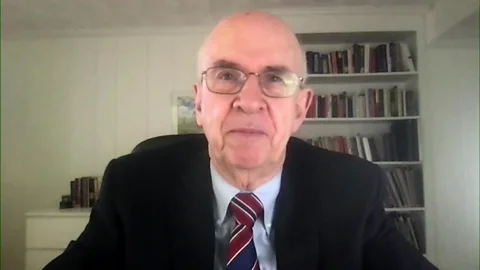 Could markets make Trump reconsider tariffs? - 17 Mar 2025
Could markets make Trump reconsider tariffs? - 17 Mar 2025Expert says that US President Trump might have no option but to U-turn if markets continue to fall.
3 hrs agoOpening Bell Why Elton John burst into tears after recording a song
Why Elton John burst into tears after recording a songThe musician explains a heavy moment thinking about the lyrics of a song from his forthcoming album.
3 hrs agoMusic Bosnia's daredevil divers jump off Mostar's UNESCO bridge
Bosnia's daredevil divers jump off Mostar's UNESCO bridgeThe Travel Show goes to Bosnia to meet divers jumping from a 24-metre-high UNESCO listed bridge.
9 hrs agoThe Travel Show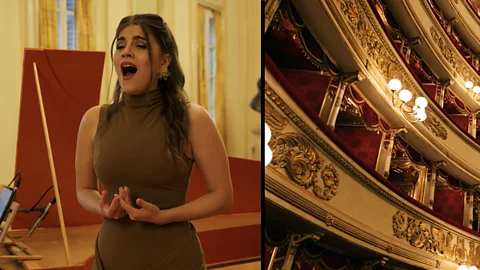 Teatro alla Scala: See the magic and mystery of opera
Teatro alla Scala: See the magic and mystery of operaFrom Verdi to Bellini, this legendary stage has been the heart of music and performance for centuries.
9 hrs agoArts in Motion Week in Markets - 14 March 2025
Week in Markets - 14 March 2025A weekly summary of the big stories from financial markets around the world.
3 days agoWorld of Business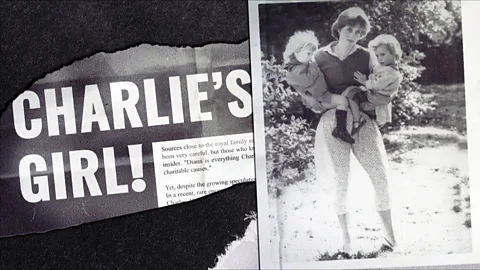 How the first 'sensational' picture of Lady Diana came about
How the first 'sensational' picture of Lady Diana came aboutIt starts nearly 40 years ago, when a teenage girl is pulled out of obscurity and thrust into the spotlight.
3 days agoPhotography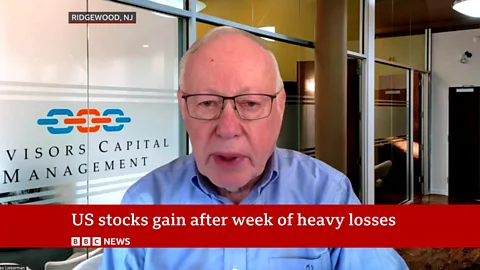 Market turmoil is normal, expert says - 14 Mar 2025
Market turmoil is normal, expert says - 14 Mar 2025Market turmoil is quite normal and nothing to worry about, Chuck Lieberman of Advisors Capital Management says.
3 days agoOpening Bell Japan's solution to the solar panel waste problem
Japan's solution to the solar panel waste problemAs billions of solar panels near the end of their lifespan, Japan looks at innovative solutions to recycle them.
3 days agoTechXplore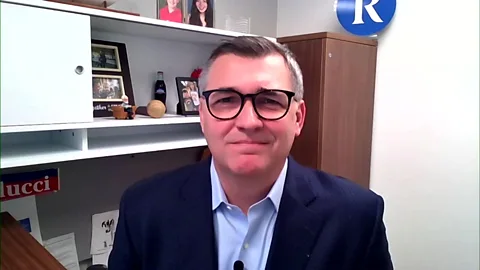 Many products hit by more than one tariff - 13 Mar 2025
Many products hit by more than one tariff - 13 Mar 2025Expert says that tariffs could make up as much as 70% of the final price.
4 days agoOpening Bell Inside one of the world's most water-efficient cities
Inside one of the world's most water-efficient citiesFukuoka, a city on Japan's Kyushu island, uses cutting-edge technology such as satellites and AI to save water.
4 days agoTechXplore What snow can teach us about street design
What snow can teach us about street designSnowfall is helping urban planners design safer and more pleasant streets in the US.
5 days agoClimate solutions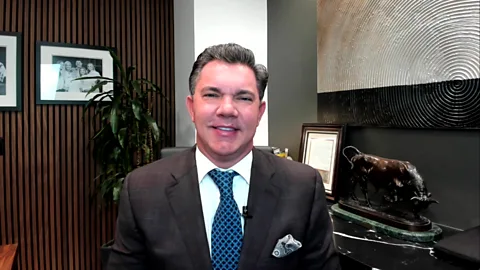 Investors nervous about Trump tariff outcome - 12 Mar 2025
Investors nervous about Trump tariff outcome - 12 Mar 2025Expert says other factors may balance out some of the inflationary impact of tariffs.
5 days agoOpening Bell The Japanese farm turning cow manure into hydrogen fuel
The Japanese farm turning cow manure into hydrogen fuelSome dairy cattle in Hokkaido are not only producing milk but also fuelling a more sustainable future.
5 days agoTechXplore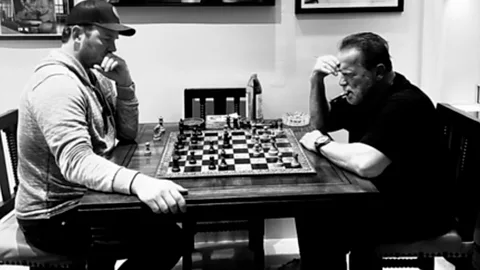 Chris Pratt on having Schwarzenegger as his father-in-law
Chris Pratt on having Schwarzenegger as his father-in-lawThe actor reveals his rituals with his famous father-in-law, including 'letting him win' at chess.
6 days agoFilm & TV How AI is booming in China
How AI is booming in ChinaChina is embracing AI in its bid to become a tech superpower by 2030.
6 days agoWorld of Business Wall Street volatile due to trade war - 11 Mar 2025
Wall Street volatile due to trade war - 11 Mar 2025Jeff Grills says US President Trump’s trade policy is unsettling markets, but it won't cause a recession.
6 days agoOpening Bell Uncovering Albania's communist past
Uncovering Albania's communist pastHow a monument to a late dictator has been repurposed and redesigned for a new generation.
7 days agoAdventures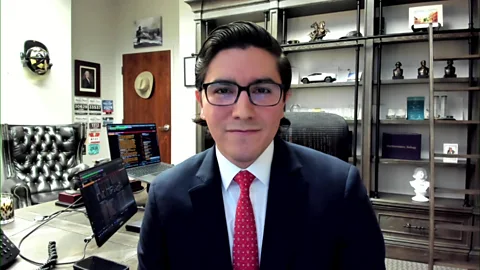 Sell-off continues on global trade war fears - 10 Mar 2025
Sell-off continues on global trade war fears - 10 Mar 2025Wall Street opened sharply lower after US President Trump refused to rule out a recession.
7 days agoOpening Bell How the largest heist in crypto history happened
How the largest heist in crypto history happenedThe hackers, known as Lazarus Group, managed to convert at least $300m (£232m) to unrecoverable funds.
7 days agoWorld of Business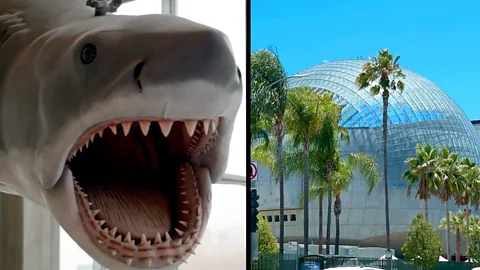 Step inside Hollywood's ultimate time capsule
Step inside Hollywood's ultimate time capsuleDiscover a century of film at the Academy Museum, home to 52 million objects bringing cinematic history to life.
7 days agoArts in MotionMore5 hrs ago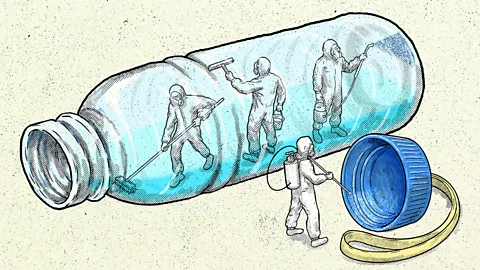 Are you cleaning your water bottle enough?
Are you cleaning your water bottle enough?Every time you take a sip from your water bottle, you are depositing bacteria inside and over the course of a day these can multiply by the millions. Should you be worried?
5 hrs agoFuture7 hrs ago A new hope for Malta's 'hell on Earth'
A new hope for Malta's 'hell on Earth'The tiny Mediterranean paradise of Comino has long been overrun by tourists, many lured by social media to photograph its iconic Blue Lagoon. Now, the island is fighting back.
7 hrs agoTravel9 hrs ago The explosive potential of custard powder
The explosive potential of custard powderCustard powder makes a delicious dessert but also has a rather less savoury potential – in certain conditions, it can be a powerful explosive.
9 hrs agoFuture1 day ago The stunning car-free village reached by cable car
The stunning car-free village reached by cable carThroughout history, this medieval hamlet has remained relatively secluded from the outside world. But now, the world's steepest cable car whisks travellers to the 430-person village.
1 day agoTravel1 day ago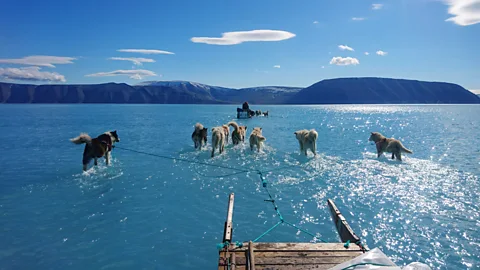 The dramatic photo of huskies walking on water
The dramatic photo of huskies walking on waterIn 2019, climate scientist Steffen Olsen took a startling photo of huskies appearing to walk on water. The photo went viral as it revealed the reality of Greenland's melting ice.
1 day agoFutureAP by OMG
Asian-Promotions.com |
Buy More, Pay Less | Anywhere in Asia
Shop Smarter on AP Today | FREE Product Samples, Latest
Discounts, Deals, Coupon Codes & Promotions | Direct Brand Updates every
second | Every Shopper’s Dream!
Asian-Promotions.com or AP lets you buy more and pay less
anywhere in Asia. Shop Smarter on AP Today. Sign-up for FREE Product Samples,
Latest Discounts, Deals, Coupon Codes & Promotions. With Direct Brand
Updates every second, AP is Every Shopper’s Dream come true! Stretch your
dollar now with AP. Start saving today!
Originally posted on: https://www.bbc.com/culture/article/20250313-jean-luc-godard-on-the-film-that-changed-cinema?ocid=global_culture_rss
